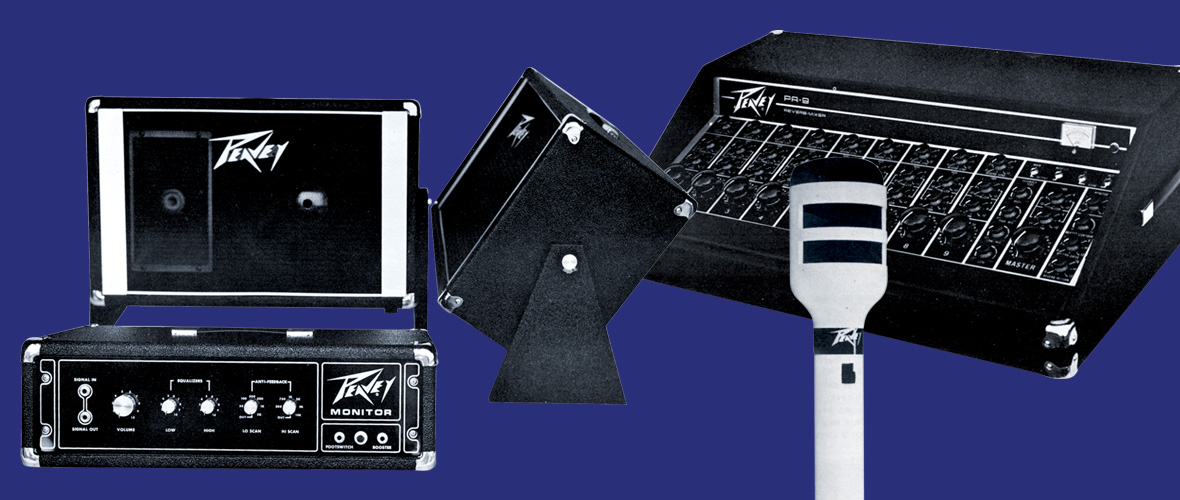Peavey Chapter Four
Peavey: Doubling Down
Chapter 4
“I think the power to succeed is in all of us — but only if you have the inner fire.”
By 1973, Peavey’s product line had expanded to cover the amplification needs of most guitarists and bass players of varying skill levels, and the company had figured out smarter ways to build gear.
The Musician guitar amp, now with a more refined head, had been on the market for seven years, and it had proven to be a favorite among service technicians and musicians on the road. Standardization of the enclosures allowed for economies of scale in cabinetry, packaging, and inventory management. Meanwhile, the DynaBass was becoming a favorite among gigging bass players, offering the same 210W power amp as the Musician but equipped with a specially designed six-channel equalizer. As a brand, Peavey was demonstrating a good understanding of the unique needs of bass players, recognizing that bass amps should be more than modified guitar amps.
1973 also saw the introduction of the PA-400 powered mixer system, with six individually mixable channels, monitor output, anti-feedback filtering circuitry, and state-of-the-art controls for PA heads. All Peavey enclosures were covered in durable, one-piece Tolex and trimmed with Peavey’s signature aluminum strips down each side of the grille cloth. At the Summer NAMM show that year, Peavey expanded the Vintage Series of amps with the 50W Classic combo, with 212 or 412 speaker configurations. The Classic, available in beige tweed or black Tolex, remains one of Peavey’s most popular models.

At this time, Peavey also introduced its first Monitor package as an innovative and affordable PA system designed to meet the needs of club bands. The 130W amp was fitted with tailored EQ and feedback filters, and the speakers, equipped with a 12-inch woofer and hyperbolic horn, were mounted on swivel stands for angled positioning. Two new Booster amps were also introduced to complete the package.
By the end of 1973, Peavey was preparing for entry into the commercial sound market. The company’s first line of high-power, long-throw speaker systems, the Commercial Sound Projector (CSP), was designed to meet the need for high-output performance in large venues. Notably, the CSP is a direct ancestor of the Peavey SP™ Series, a staple in the Peavey passive enclosure line since the late 1970s.
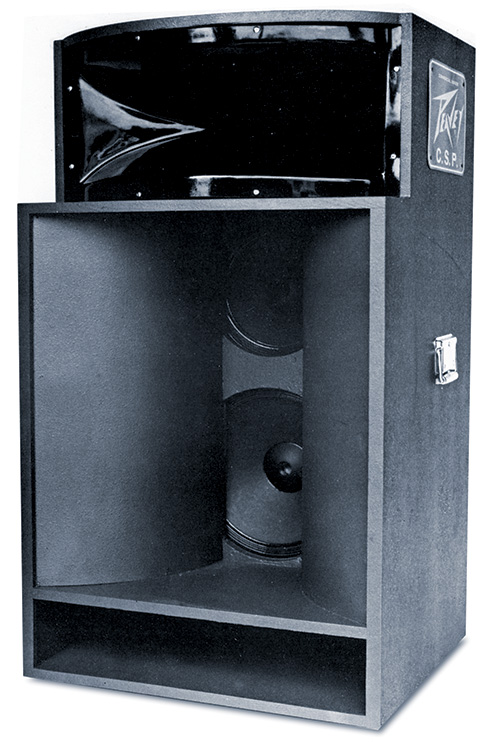
Peavey’s Next Big Move…into a Banana Building
Given the extent of new products rolling off the line, Peavey was quickly in need of more manufacturing space. In the summer of 1973, the company acquired a vacant office building on A Street in Meridian and broke ground for Plant 3 across the street. All production was transferred to Plant 3 by the end of 1974, when Peavey officially became the largest manufacturer of its kind in the U.S., with nearly 250,000 square feet of manufacturing capacity under one roof.
Plant 3 eventually expanded to reach more than 308,000 square feet. About a dozen homes on A street stood in the way of the expansion, and Hartley was advised to go to the city to ask about acquiring the properties. However, he didn’t feel right about this, especially considering that some of these homes were occupied by Meridian’s elderly residents. Consequently, Plant 3 became known as the “Banana Building” both for its yellow paint and the way the additions formed around the houses.
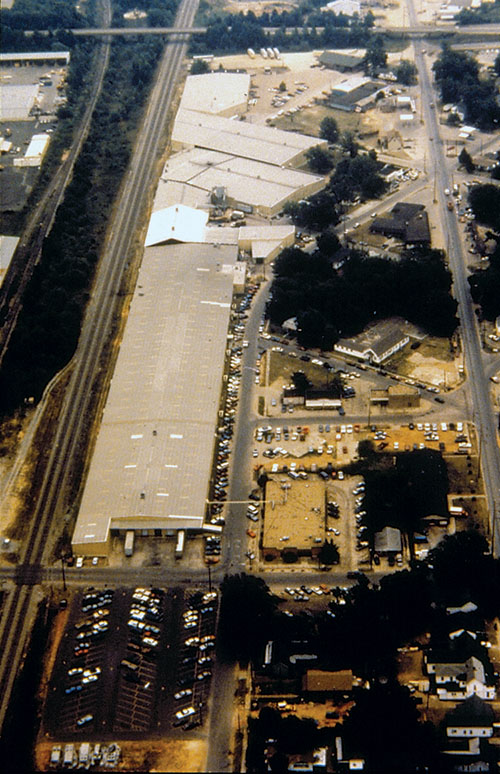
The plant grew to nearly a quarter-mile in length and its expansion continued until it reached the local highway bypass. Plant 3 effectively doubled Peavey’s manufacturing capacity and allowed the company to keep up with the brand’s growing popularity. The facility became the company’s main manufacturing plant, housing loudspeaker manufacturing, cabinetry, circuit boards, tooling, a custom amp shop, a carbon-fiber guitar lab, and more. Still, the burgeoning company needed more space and would acquire even more buildings in Meridian and other nearby towns.
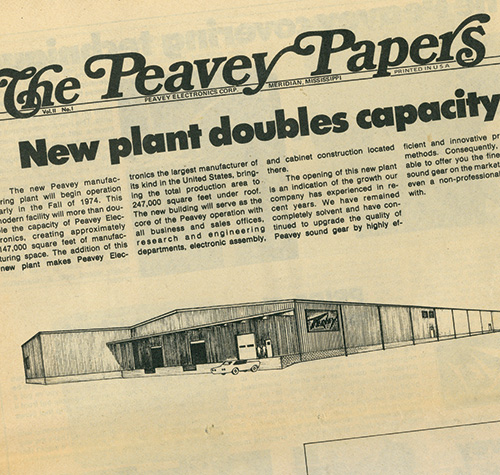
Accommodating More Growth, Overcoming More Challenges
Peavey’s export business was showing great promise after the company signed its first distributor outside of North America, Norse Musikk of Norway, in 1972. More opportunities overseas came with more challenges. On one hand, international expansion required the acquisition of special voltage transformers, power cords, and electrical plugs. On the other hand, there was a learning curve that entailed knowledge of foreign regulations and shipping documentation. Pete Wood, formerly of Ampeg, joined Peavey in 1973 to lead the Export Department in the new headquarters at 711 A Street. He was assisted by Lucy Lafferty who handled marketing and was tasked with allocating production between domestic and export customers at a time when there was already $2 million worth of back orders.
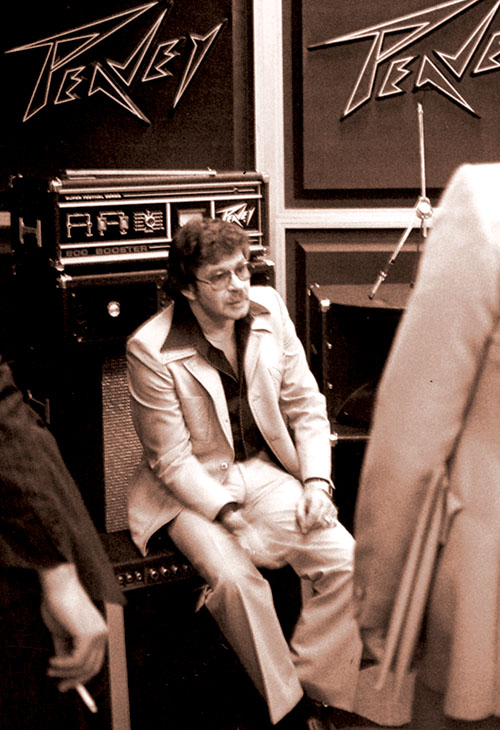
Reinvesting in the Company
By 1974, Peavey employee Willie Hatcher’s planning and organizational talents were driving profits. Meanwhile, Hartley was funding a significant proportion of the company’s growth internally, with the strong belief that he should reinvest profits to expand the business rather than spend on his own lifestyle.
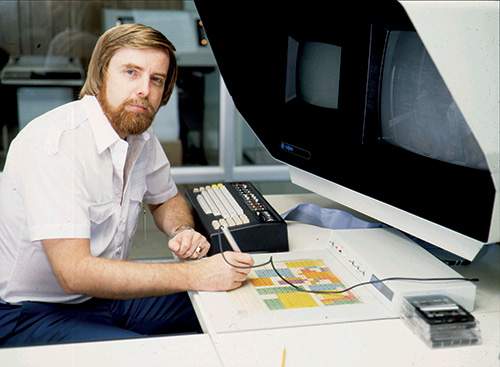
Doubling down on growth, Peavey executed several innovations across their product line in 1974:
- Deuce II replaced the original twin combo amp.
- The Session combo is embraced by Curly Chalker and other top steel guitar players.
- The Century, an all-purpose 60W instrument amp top, bolsters the bottom of Peavey’s price range.
- The Roadmaster replaces the VTA-400 tube head and is the first Peavey amp to feature Automix, which will become an industry standard.
- 800 Mixer is introduced, offering eight separate channels.
- The PA-600 and PA-900 replace the original PA-6A and PA-9A powered mixers.
- Two small 45W combo amps, the Pacer for guitar and TNT for bass, lead the way for an extensive line of small combos.
- Peavey microphones in two models are introduced, at first outsourced but later built in-house.
At this point, the concept of PA system expandability was on the horizon and presented an attractive proposition to musicians. A PA system would no longer become obsolete if more musicians needed to join the system or if an artist or band was playing bigger venues. As a result, Peavey’s PA-6A and PA-9A not only had a monitor line output to connect a separate amp and speaker as stage monitors, but a separate main line output for connecting one or more amplifiers and speaker systems.

The opportunity to sell more gear to more musicians came with responsibility. Hartley soon realized that amateur performers needed a better understanding of professional sound reinforcement, and he believed that educated consumers would be better equipped to make better buying decisions.
With an eye toward consumer education, Peavey began producing sales literature that included technical tips on power, tubes vs. transistors, gain vs. sensitivity, impedance and feedback. Beyond these materials, Hartley and his growing team had some innovative ideas for dealer education — a concept that would further distinguish the company among competitors.
